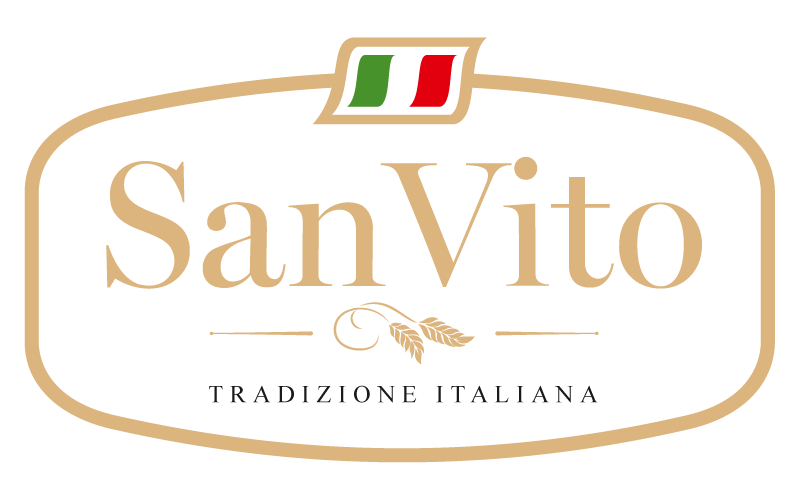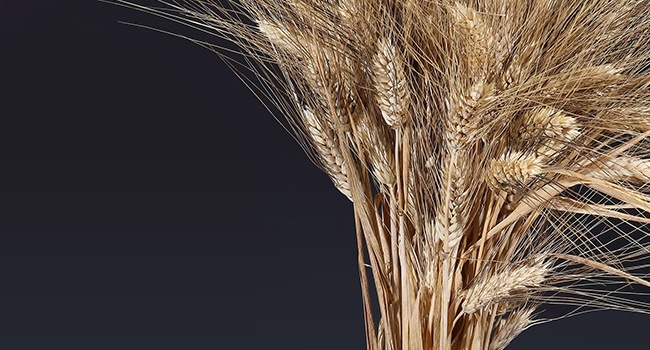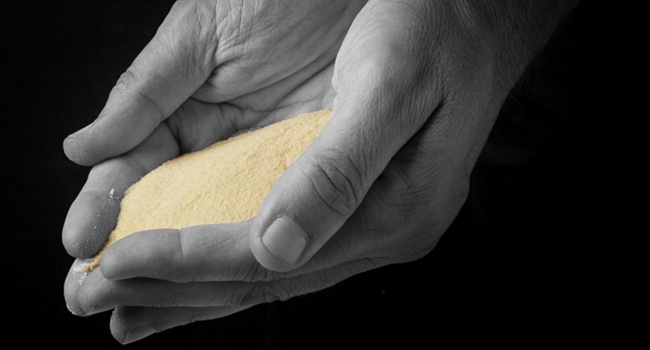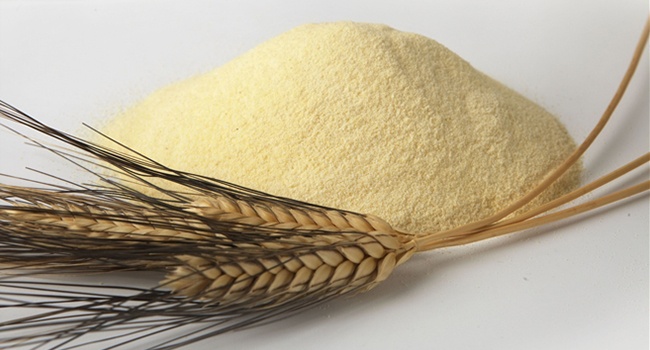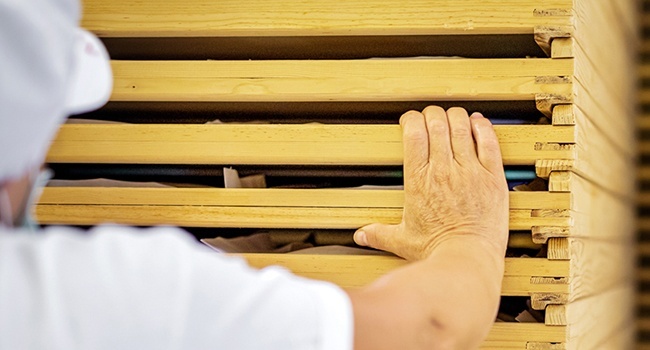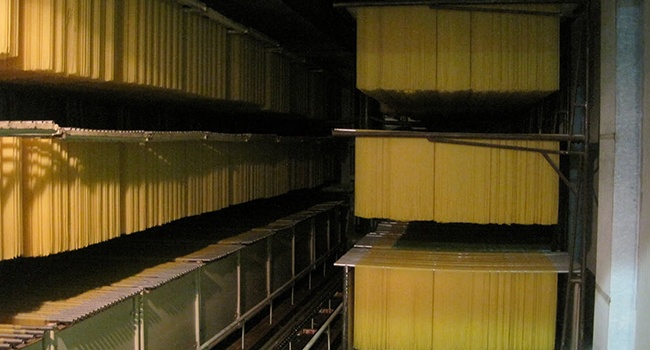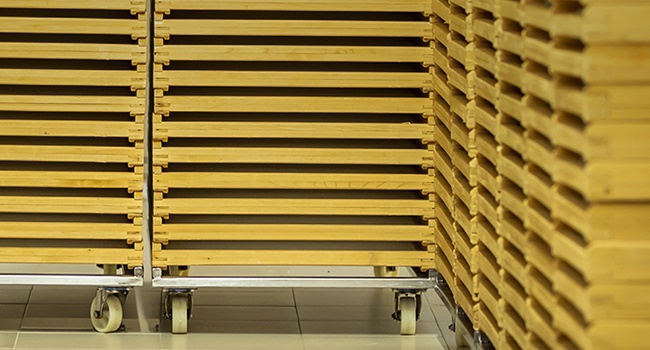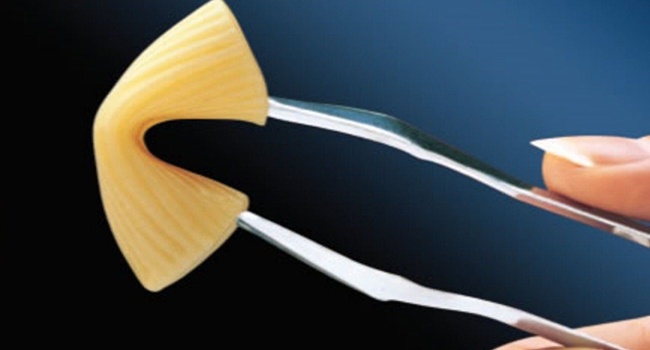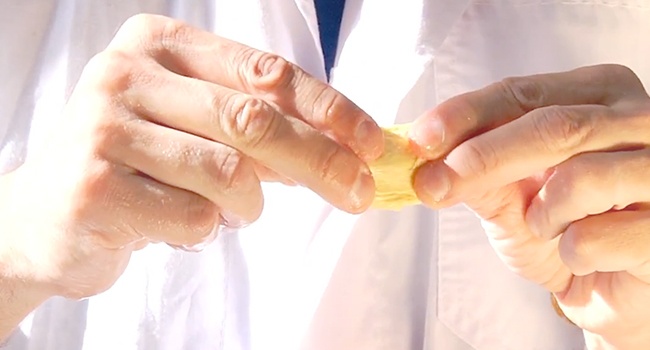Brand
From one generation to another. Since 1974 we have been carrying on an important task of making pasta, without compromise, that we improve each single day and that allows us to bring the authentic pleasure of Italian cuisine all over the world.
San Vito brings you an exclusive collection of distinctive pasta shapes which take you to the most beautiful regions of Italy.
Thanks to the company’s continuous quest for the highest production quality, San Vito has become well established in international markets.
The result is a sauce absorbing porous and tasty San Vito.
Process
Semolina
Our pasta is made exclusively with “coarse” durum wheat semolina, golden like the sun, to obtain a signature pasta with distinctive taste.
Passion for quality is an important factor for San Vito, therefore experts go in person to the harvest fields and see “for themselves” the quality of the wheat.
The flour is obtained by milling the wheat and it gives the pasta an amber color and protein elements that are transformed into gluten in processing as a result of hydration. Gluten is the backbone of the pasta, in fact it determines the elasticity in cooking, a pleasant smell and a slightly salty taste.
Think about this the next time you choose San Vito
Water
Our pasta is made by mixing the durum wheat flour with cold water from the local aquifer.
Water is in fact, one of the determining factors for the taste of San Vito pasta and that’s why we use only the best quality of pure natural water, which gives a unique taste to San Vito.
Drying Process
It is one of the most important steps of the production, in fact we chose a method of slow drying, from 15 hours to 24 hours depending on the cuts and a low temperature which preserves the organoleptic and fragrance of the grain noticeable on the palate.
In large commercial pasta plant, pasta is dried in three to four hours, with temperatures up to 130° C. The savings in time and cost is significant, but this is totally at the expense of nutritional quality.
The slow drying procedure, even if it is longer and expensive, guarantees the good product’s digestibility and the retention of proteins and amino acids, always preserving its taste.
The short pasta is dried on wooden frames, while the long ones are arranged on rods and then on bogies, both in static cells then are left for the time necessary to have them ready for packing San Vito.
Quality
The tasting ritual as it is called is an “all San Vito” tradition, renewed through generations to guarantee you the best pasta.
Before the actual tasting, the semolina flour, the raw material accurately obtained from the wheat milling, is smelt by expert tasters, after having been moistened with water and left to rest to allow it to free its unique fragrance.
The tasters verify that the plain pasta, without sauces or condiments, respects colour, fragrance, elasticity and firmness during cooking parameters each penne or spaghetti must have to call itself San Vito. It must smell of wheat and it must have the typical pale yellow colour of the San Vito grains. Then they make sure that its taste is not bitter, and finally, they check the consistency and the elasticity of the pasta.
After the tasting, which is also performed by the owners themselves, the pasta is left to rest for 5-10 minutes and then tasted again. This point is essential to test the consistency of the pasta during cooking, i.e. the pasta’s ability of not softening and overcooking on its way from the colander to the plate. To pass the test, it must be like just cooked. But these are only the last tests of a long series.
Before it falls into the tasters’ plates, San Vito pasta has undergone a long procedure of laboratory analysis, also carried out on raw pasta, during which, the right thickness and shape perfection are constantly checked. All this does not count without the consent of the tasters, who have the last word on quality. When you taste the pasta on your plate, you will understand why San Vito.
